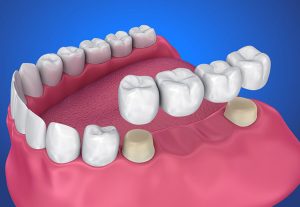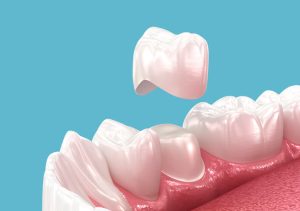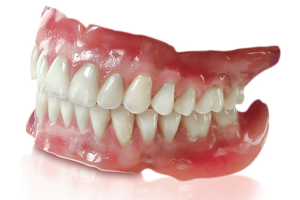Restorative Dentistry
Restorative Dentistry
We understand that fillings are the most common procedures that are done in the dental clinics. Lack of proper dental care may lead to the development of a disease, which is referred to as decay, which is commonly known as cavities. Dental fillings are used to replace the parts of the tooth which have been damaged by this decay in order to improve the appearance and functionality of the tooth.
However, if the decay is extensive or if there are large fractures then crowns might be a better option. We provide a full spectrum of services from fillings, cleanings, root canals, implants, crowns and bridges. Our goal is to meet your dental requirements while making your time with us as comfortable as possible.
Fillings
If you have a cavity then we will first need to drill out the affected part of the tooth and then fill the cavity that has been affected by the decay. It also useful in fixing cracked or even broken teeth or those that have been worn down through habits such as nail biting or bruxism.
Currently, there is a variety of filling materials used by dentists for filling a cavity. Some of the fillings include gold, porcelain and the most commonly used are the tooth colored composites which are made of plastic and glass. The type of filling used depends upon several factors which include the extent and the site of the decay, the cost of the filling, the patient’s insurance coverage, and the recommendation of the dentist on which filling would be the best for the patient.
Root Canals
If a tooth develops a deep cavity, gets knocked or has periodontal disease, then the nerve can become inflamed or even infected along with developing a dental abscess which causes pain. Root canal is a way of solving this problem, that involves the removal of the nerve and pulp and then a comprehensive cleaning and sealing of the interior of the tooth.
A root canal that has been done successfully enables you to keep the tooth without the other teeth getting displaced and hence reducing the chances of complications along the jaw. This also means that there is no need for a prosthesis. Root canals at UBC Dentist at Lelem Village are performed using state of the art techniques and with the help of our experienced team you can be assured of a comfortable procedure.
Oral Surgery
Some oral problems may require the use of minor surgery in order to solve them. Concerns such as impacted wisdom teeth, the placement of dental implants for patients with gaps where teeth are missing, and the excision of oral lesions can be treated by our knowledgeable dentists who use local anesthetic. In instance of particular cases which cannot be managed by the general dentist, we work with a group of Oral Maxillofacial Surgeons to deliver the best results to you.
Inlays and Onlays
Inlays and Onlays are other types of fillings that can be used to give your teeth a beautiful new look with the use of porcelain or resin work. These aesthetic options are a good choice, and they are a good replacement for the traditional fillings since they are almost identical to your natural tooth.
Inlays are used to fill the spaces that are present between the cusps of the teeth while onlays cover the chewing surface and are used to fill large cavities as with a large filling. We often turn to inlays and onlays because they are quite reliable, they involve the least amount of reduction of the tooth structure and are more long lasting than some other forms of treatment.
The procedure:
The process of getting inlays or onlays to restore your teeth is a process that will require you to make two visits to UBC Dentist at Lelem Village. In the first sitting, the teeth are first shaped properly and an impression made which is then sent to a dental laboratory. At the facility, a model of your teeth is made in order to manufacture your inlay or onlay from materials such as porcelain, gold or resins.
In the second visit, the inlay or onlay will be fitted and placed in the proper position with necessary adjustments made to ensure that it is well seated. Once all is fine-tuned, we will proceed to fix it then finish off by polishing it and check once more the alignment of your bite to ensure that it is well cushioned between your jaws thus enhancing the appearance and working of your teeth.
Bridges
A dental bridge is a fixed prosthesis which is used to replace one or more missing teeth thereby filling the gap between the two adjacent teeth.
Now, let us turn our focus to the fixed bridge which is cemented or affixed in position next to the abutment teeth that are the teeth on either side of the gap. Made up of a minimum of three units, which include a pontic that is a false tooth which is lying between the two crowns that are glued to the abutment teeth, a fixed bridge is one of the most common ways of addressing a gap where a tooth is missing. 
If you have a gap in your teeth and you are willing to take good care of your teeth then you may be a good candidate for a bridge. Failure to fill the space may cause the neighboring teeth to move out of position, thereby increasing the chances of developing cavities or gum diseases that may lead to loss of more teeth.
In addition to the above, fixed bridges improve the patient’s ability to chew as well as speak by restoring proper bite function, they also enhance the patient’s appearance by preventing collapse of the facial structure hence no early development of wrinkles and lines that are associated with age.
Crowns
A crown is a dental prosthesis which covers the entire tooth structure with the aim of giving it the proper form and size, as well as strengthening and esthetic improvement. Crowns are needed when fillings cannot be used due to the extent of the damage to the tooth. In a damaged tooth, a crown helps in cementing the tooth strongly thus preventing the progression of the fracture. Also, crowns are useful when used in supporting large fillings in situations where there is no more than enough healthy tooth structure left in order to prevent the filled tooth from developing a crack or to fix a broken tooth or to cover a discolored or misshaped tooth.
How is a crown placed?
 To prepare a tooth for a crown, the dentist reduces its size to create a proper fit for the crown. An impression of the teeth and gums is taken and forwarded to the lab for the crown’s fabrication. Meanwhile, a temporary crown is placed over the tooth to protect it until the permanent crown is ready. During the subsequent visit, the dentist removes the temporary crown and secures the permanent one onto the tooth, ensuring a perfect fit and finish.
To prepare a tooth for a crown, the dentist reduces its size to create a proper fit for the crown. An impression of the teeth and gums is taken and forwarded to the lab for the crown’s fabrication. Meanwhile, a temporary crown is placed over the tooth to protect it until the permanent crown is ready. During the subsequent visit, the dentist removes the temporary crown and secures the permanent one onto the tooth, ensuring a perfect fit and finish.
So will it look real?
Yes, it will. The goal of the dentist is to make the crowns to be as close as possible to the natural teeth. This is why the impression is made. When coming up with the desired look, several factors have to be put into consideration; these include the color, the bite, the shape, and the length of your natural teeth. Any one of these aspects can really make a difference to your looks.
Prevention, Prevention, Prevention! That’s the motto!
Post crown reinforcement, make sure that you clean the area well and floss along the gums as well. Even though the crown helps in protecting the remaining part of the tooth from developing decay, it is important to protect the base of the crown from bacteria accumulation and gum disease. Therefore, if you brush and floss your crown as you would your natural teeth, then you will be able to maintain the crown in good condition for many years.
Crowns
Crown is a form of dental restoration which covers the entire tooth structure to give it its normal shape and size while at the same time strengthening it and improving its appearance. Crowns are decisive when fillings are ineffective due to the extensive damage of the tooth. In a cracked tooth, a crown fits over the tooth and keeps it from breaking or deteriorating further. Moreover, crowns are useful when large fillings are used as the tooth structure has been damaged or is insufficient for supporting large fillings thus protecting the weak teeth from breaking or fixing broken teeth or covering the colored or misshapened teeth.
Dental Implants
An implant is a special titanium screw which is made in a way that it can replace the root of a tooth that has been lost. This implant is fixed in the jaw bone and after some time the bone integrates with it thus providing a strong platform for the replacement tooth. Implants are a very effective way of replacing a single tooth or a group of teeth that has been lost and they give a natural look and feel as well as improved functionality. With a good reputation and with a strong and large clinical history dental implants prevent the loss of facial structure and the difficulties that arise in the process of tooth loss. This can be an ideal solution for people who have had their teeth removed due to accident, disease or caries and there are many clinics in Greater Vancouver that offer this service.
If you have one missing tooth, several or even all of them, then you may opt to use crowns or bridges connected with the implants to overcome the challenge. Some of the patients who are of advanced age may be concerned that they cannot be a candidates for dental implants, but age is not as crucial as the general well being of the patient. If you are able to have a tooth extracted then it is likely that you are a good candidate for implants. The dentist will review your dental and medical history to determine whether or not you are a good candidate for the procedure and how to best address any concerns that you may have.
Is there any pain or discomfort involved?
It is a common knowledge that the discomfort that is associated with the procedure is usually minimal, and many patients have expressed that they even feel comfortable after the procedure than they expected to be. The implants are placed very carefully and gently to avoid damaging any of the tissues found in the area. Your dentist avoids any discomfort that you may feel during the procedure by using anesthesia and sedation. You may also be given the contact details of a former patient who has undergone tooth replacement therapy thus you can get to know more about his or her experience.
How will I benefit from dental implants?
Implant treatment has the following advantages, better appearance, better ability to chew and enjoy food, and also it helps in protecting other teeth and the jaw bone. Dental implants provide a list of benefits that were not available for the treatment of missing teeth. In other words, these are biomarkers that are meant to mimic the look, feel and function of natural teeth.
How long will the treatment take?
The time it takes to complete the treatment will depend on the specific situation that you have. These days it is quite possible to get good working and looking teeth within a few days if you live in Vancouver, Delta, Abbotsford or any other city. However, there are instances where it may be imperative to have the restoration process taken longer in order to achieve the best results.
Will I ever be without my teeth?
The answer depends on the specific case; in most cases, most patients are able to be discharged with some sort of a temporary prosthesis.
How much will it cost?
The cost of placing dental implants to replace teeth vary depending on the number of teeth to be replaced and the number of implants required to hold the replacement teeth. It should however be understood that not every root requires an individual implant. Some other procedures may also be needed before the placement of the implant to ensure that the implants are durable. In order to get an accurate estimate of the fees, it is necessary to have an examination done by a dentist. Thus, after the detailed diagnostic evaluation, the dentist will offer the suggested solutions that are suitable for you and a breakdown of all the costs involved in the procedure.
How long do implants last?
It is quite normal for dental implants to last a lifetime in most of the patients. The first person who received dental implants did so in the year 1965 and they served the person up to 2006 marking more than 40 years of service. The first dental implants have been placed by dentists in and around Greater Vancouver for many years now.
How does implant compare to normal dentures?
Implants provide a quality of life that cannot be compared to that of dentures that are usually removed at night. A poll was conducted on patients who had their teeth extracted and switched from dentures to implants and the outcomes revealed this; while natural teeth were rated at 10, dentures rated at 2 while implants rated at 9. Even your friends may not know that you have implants and yet you will be more than happy to tell them your experience.
Dentures
There are two main types of dentures, namely, the partial dentures and the full dentures and both are made in a dental lab based on the mold of your mouth. The partial dentures are used to replace one or more missing teeth and are constructed with crowns which are fitted to the adjacent teeth and are removable and can be taken out for cleaning and at night.
These are suitable in cases where the adjacent teeth are not strong to hold a bridge or where several teeth are missing. On the other hand, full dentures which is also known as complete dentures or false teeth are worn by patients who have lost all their teeth and should be taken care of like natural teeth.

Since the mouth is a dynamic part of the body it is advisable to have your dentures fitted every now and then to ensure that they are in the right position and if you are a wearer of a partial denture then you should visit your dentist frequently for the check up of your natural teeth and gums.
Periodontal Services
Periodontal Services Periodontal your disease teeth is with an the infection gum which tissue affects being the more tissues loosely surrounding attached and to supporting the teeth than it would seem. Behind the tooth there is a shallow V shaped gap called sulcus this is where periodontal disease starts off from, then it progresses to destroy the area between the tooth and the gums.
As these tissues get affected the sulcus becomes a pocket; it has been deemed that the severity of the disease is directly related to the depth of this pocket. Periodontal diseases the are disease classified and depending they on are the divided severity into of two; gingivitis and periodontitis. Gingivitis is a less severe and a reversible form of periodontal disease that mainly affects the gums and if not checked may progress to the more severe and destructive form of periodontitis.
